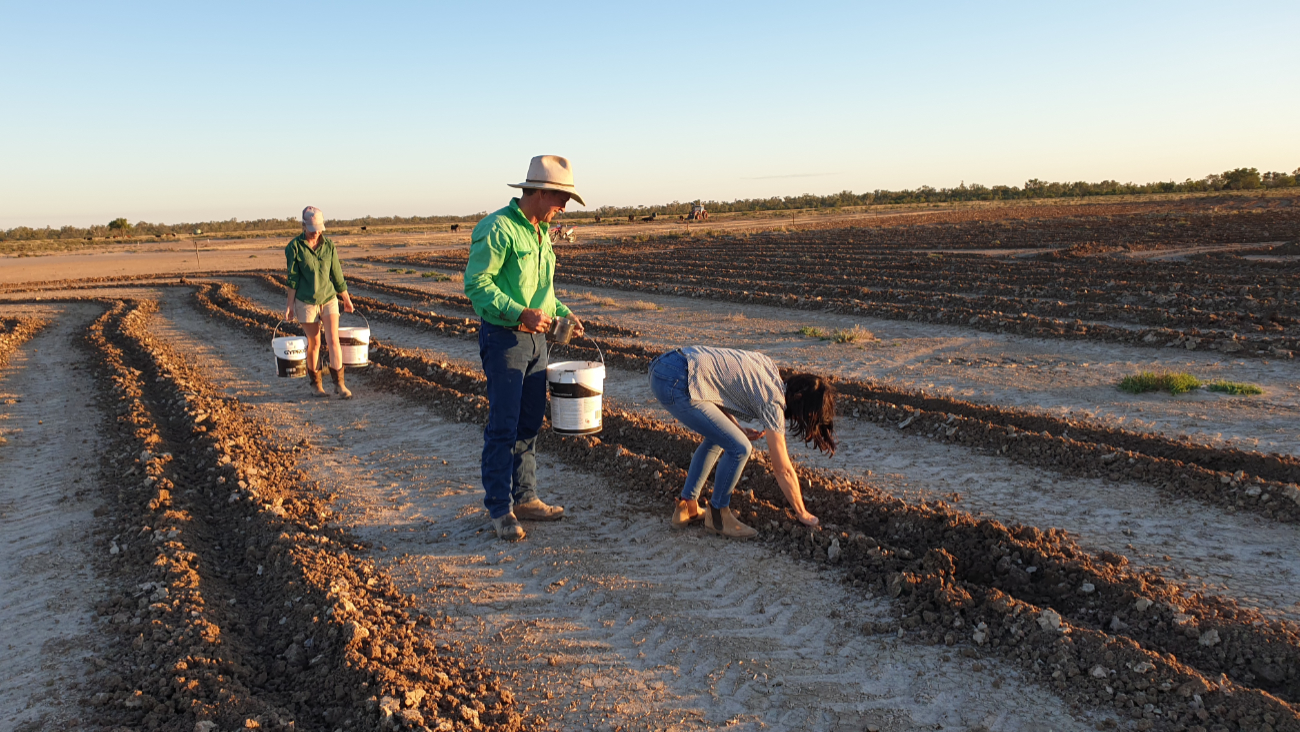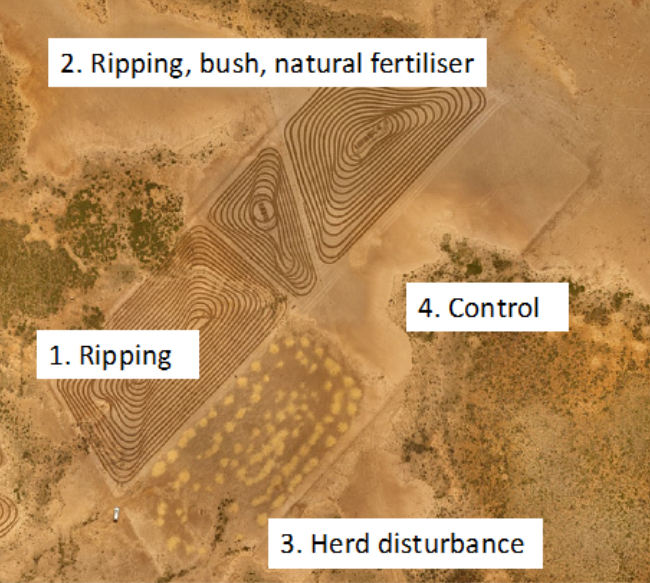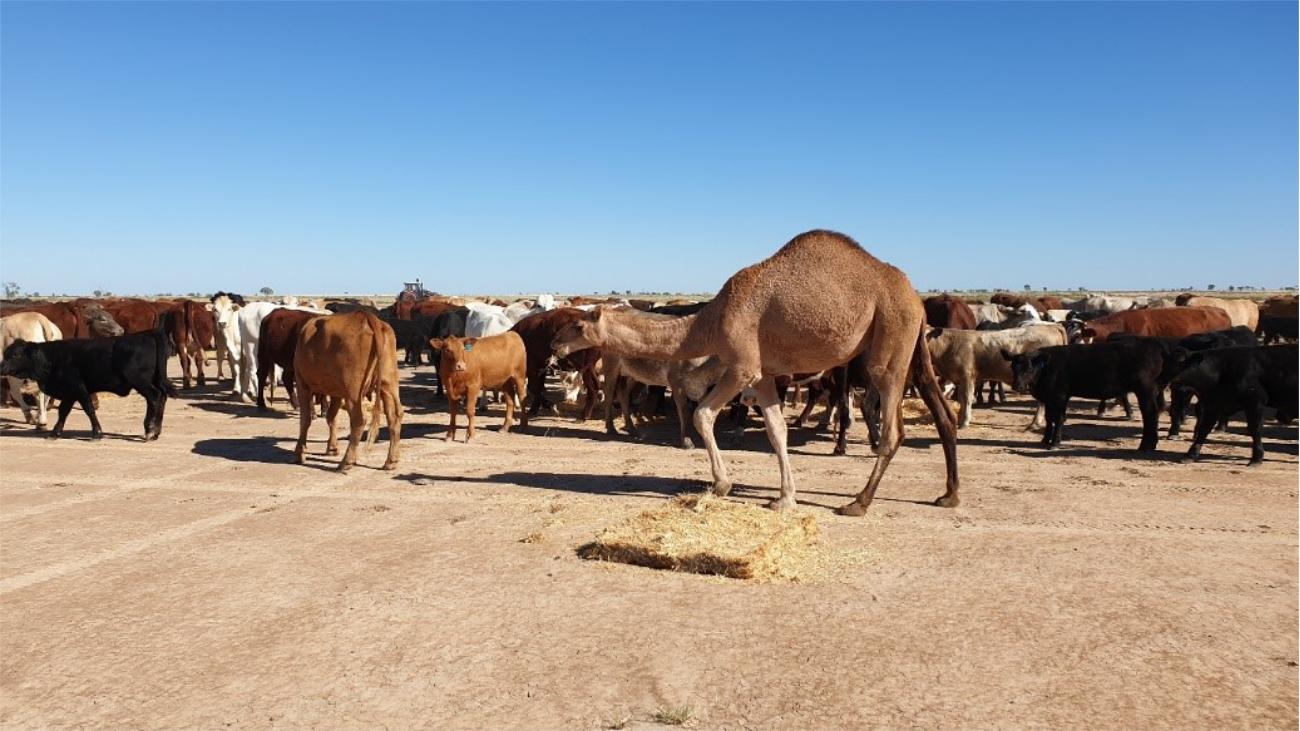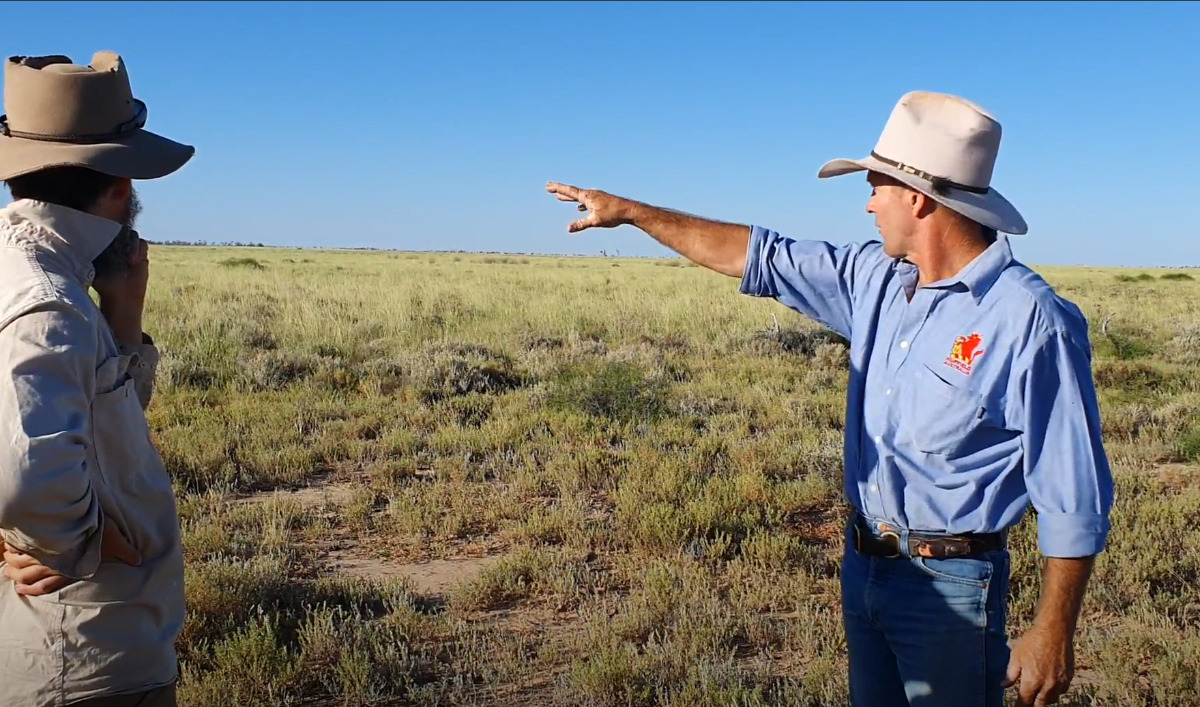Farmer-led research on soil health practices
As part of the Rangelands Living Skin project, producers are running trials of low-cost, scalable practices that they hope will offer multiple benefits.
For example, Graham and Cathy Finlayson of Bokhara Plains – a cattle grazing enterprise near Brewarrina, NSW – are seeking to improve soil, pasture, production and biodiversity by experimenting with different strategies to rehabilitate clay pans and salt scalds.
Together with researchers from NSW Department of Primary Industries (DPI) and Australian National University (ANU), the Finlaysons designed an experiment for testing three practices. They created one plot for each practice and kept one plot as a ‘control’, where no actions were undertaken.
Three testing practices

Planting Old Man Saltbush every three metres in the rip line, and adding 1/2 cup of biological stimulants (such as vermi-liquid or seaweed extract) directly over seed before burying.
Plot 1. Ripping
As a form of mechanical disturbance of the clay plan, a single tine behind a tractor was used to rip a 30 cm deep trough, in a spiral formation, with each line about one metre apart. Graham and Cathy along with project partners are testing whether this will increase water absorption to stimulate the existing seed bank, thus allowing plants to establish and increase ground cover on scalded areas.
Plot 2. Ripping, saltbush seed and natural fertiliser
The second plot was also ripped and in addition, Old Man Saltbush seeds (a native perennial shrub) were placed every three metres in the rip line. Half a cup of a biological stimulant (either diluted vermi-liquid or seaweed extract) was added directly over the seed before burying it. The team is keen to learn how the addition of seed along with biological stimulants may aid in rehabilitating scalded areas.
Plot 3. Hay and herd impact
The third plot Is testing the impact of intense herd disturbance of the claypan. To prepare the third plot, haybales were spread throughout the area to introduce organic matter, increase excitement among the entering herd, and ensure the herd dispersed across the plot.
A herd of around 600 450kg cattle (and two camels) disturbed the clay plan for 80 minutes, with continuous movement of the herd encouraged during this time.

The three trial plots compared to a control plot (Drone Imagery Source: Kirsty Yeates, ANU).

Approximately 600 450kg cattle (and two camels) grazed the ~50x120m area for 80 mins.
Reflecting on this trial.
Reflecting on this trial, Graham said, “We had really good mulching impact, a lot of dung deposited, and then we were lucky to get 60mm of rain. I’ve been toying with doing this for over 20 years on this clay pan.”
His reflection reiterates the complexity of running these trials, as the weather can have a strong influence on the impact of the trial.
The fourth plot was designated as a control, in which no actions were undertaken. This plot will provide a comparison to the impact of ripping, ripping and reseeding with biological stimulants, and intense herd disturbance.
A key research question of the biological stimulant and herd impact (and the associated dung microbial communities) treatments is: to what degree and in what conditions will these biological stimulants and dung/saliva microbes improve the biology in the soil, and thus
improve soil structure, soil functionality, thus pasture health and productivity? The effect of biological stimulants in rangeland environments will be further examined in additional replicated trials through this project at Bokhara Plains and elsewhere.
Over the next year, the impact of these three practices on soil, pasture and biodiversity will be observed by monitoring surface soil condition, soil carbon, soil biology, ground cover and pasture composition.
So far in observing the four trial plots, Graham has noticed that after the recent rain, the water absorbed much faster in the plot of herd disturbance rather than the plots with mechanical ripping, where the water was pooling. (See Graham’s video below which shows the slow water absorption in the areas without herd disturbance.)
DPI project manager Sarah McDonald sees great value in the applied nature of the project. “The best thing about this trial is that we will have something to show others, a story of what has or hasn’t worked and why,” she said.
Stay tuned for more results and considerations for how these methods might be used in your landscape.
The Rangelands Living Skin
The Rangelands Living Skin is a partnership project in the NSW Rangelands linking farming families, scientists and industry to evaluate and showcase practices that balance production, environmental stewardship and economics. Led by NSW Department of Primary Industries and funded by Meat & Livestock Australia, and with over 10 project partners, it is a significant investment in the NSW Southern Rangelands.
To learn more about field days and project insights, sign up to our Facebook page and register for regular emails by contacting To Luke Beange at NSW DPI: [email protected].
Links
https://soilsforlife.org.au/rangelands-living-skin/
https://www.mla.com.au/research-and-development/Grazing-pasture-management/rangelands-living-skin/





